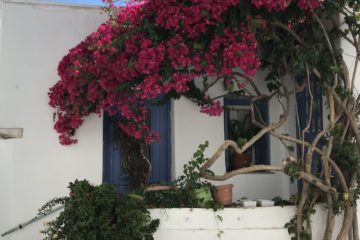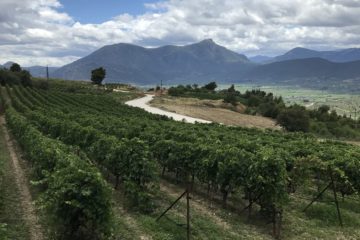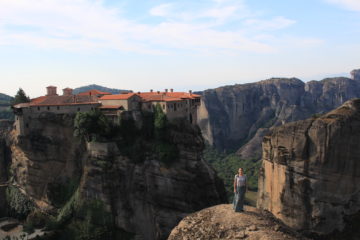Monywa is a small town with essentially no western tourism infrastructure whatsoever. Similar to Mandalay, there are a bunch of interesting and attractive sights scattered within easy driving distance of the city, and yet it doesn’t appear that there are enough tourists to support an industry of tour vans or buses that regularly do the loop. Our hotel was more than willing to set up a private taxi for us to go to the sights we had read about, though, so we scheduled it and settled in. As far as the town itself is concerned, there was a night market with a few local food stalls, a café with a few unusual pastries and fruit shakes, and that’s about it. We wandered the streets for a while through the dust, stray dogs, and locals staring at us with curiosity and amusement, used the intermittent WiFi at the café for a while, then eventually gave up and returned to the hotel.
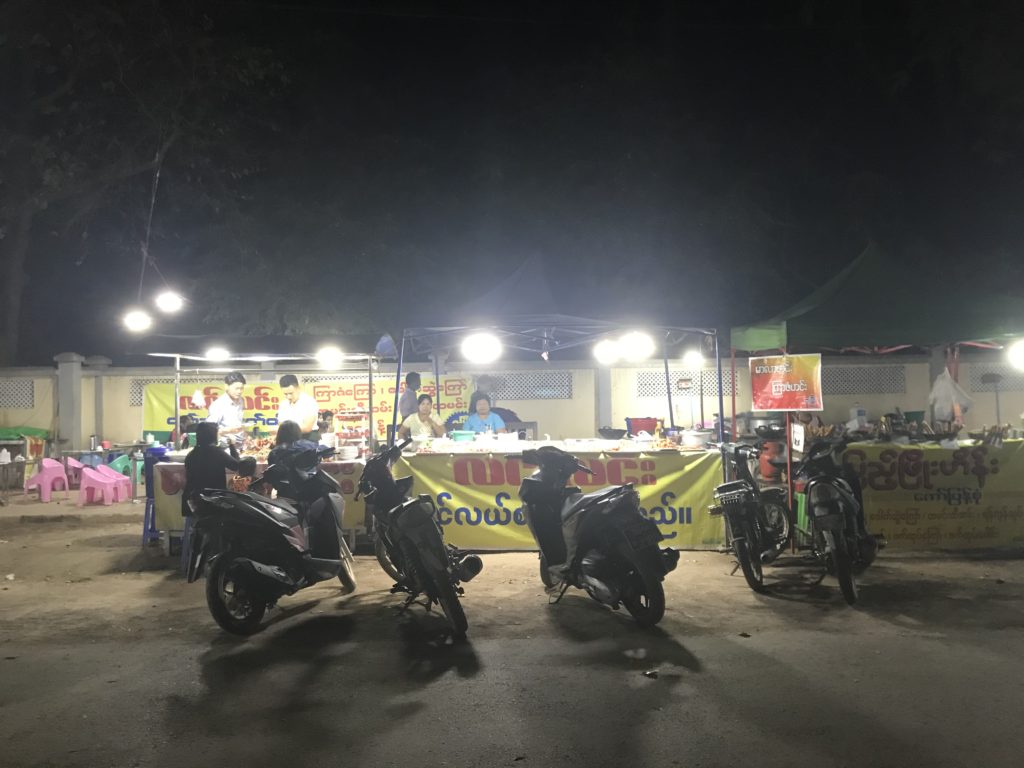
Motorbikes parked in front of a stand at the Monywa street market.
As much as I appreciate seeing a place with so few tourists, Monywa just didn’t have much to offer in the way of charm or beauty, local or otherwise. It’s still interesting to see, but nothing to write home about (as they say). [Editor’s note: Jess is mostly correct, but I slightly disagree on one point. Monywa was super charming in that it was probably the friendliest city we visited, with people sincerely in awe of us and interested in meeting us. Again, there were no tourists at all – when we took our walk to the market, we only saw three Westerners sitting the back of a truck (leading us to believe they were either being transported around or held hostage). The highlight was when a tiny 6 or 7 year old girl with a shaved head and wearing her pink monk robe saw us. She confidently walked over to us, stuck her hand out to me and introduced herself, clearly practicing the English language skills she was learning in school. She didn’t know many words, but it was adorable that we were so novel to her that she wanted to seize the opportunity. Clearly we melted in that moment.]
The next day, Rorie was still feeling sick enough that he didn’t want to risk the taxi ride to the sights, so I left him back at the hotel to recover in the room and headed out with the driver, who basically spoke no English. [Editor’s note: As an added irony, the only reason we were in Monywa at all is because I had researched the city and found stuff I wanted to see. Most tourists don’t go there and Jess basically didn’t know anything about it before we arrived. Then I managed to get sick and spent my whole time in the city in our hotel room while Jess saw all the stuff that I researched. Cruel, cruel irony.] I had a map from the hotel with me that had the sights on our itinerary marked, so we were able to get by. Our first stop was quite possibly one of the most beautiful temples I’ve ever seen – it wasn’t even on our radar as a place to visit but happened to be on the way to one of the other spots, so he stopped for me to walk around. Called Thanboddhay Pagoda, this temple was more like a palace, with a pale pink color contrasting with the countless gold stupas and intricate floral carvings everywhere. I walked around in awe, taking as many pictures as I could, trying not to stare at the women in their colorful skirts and faces painted with the local wood powder used for sunscreen and beauty, just as they were trying not to stare back at me. Whenever we caught eyes we’d smile at each other, and with the younger children I’d wave to their great delight. Inside the palace was the real attraction, though personally I liked the outside even better. The other name for Thanboddhay Pagoda is “Five Hundred Thousand Buddha”, and inside the walls are completely covered by approximately 500,000 small and large Buddhas carved into every surface. It reminded me of the Yungang Grottoes outside Datong, China, though this temple was originally built in the 14th century and restored in the last hundred years (whereas the Yungang Grottoes are close to 2000 years old).
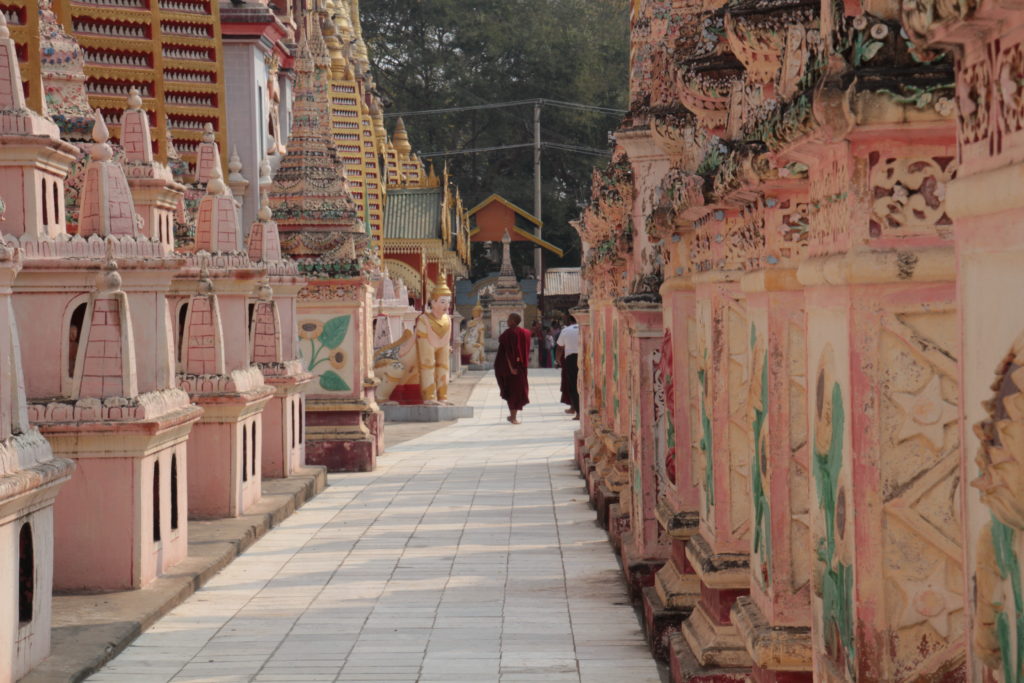
A monk walks down a passageway at Thanboddhay Pagoda.

This is basically inspiration for my future house. Sorry, Rorie!
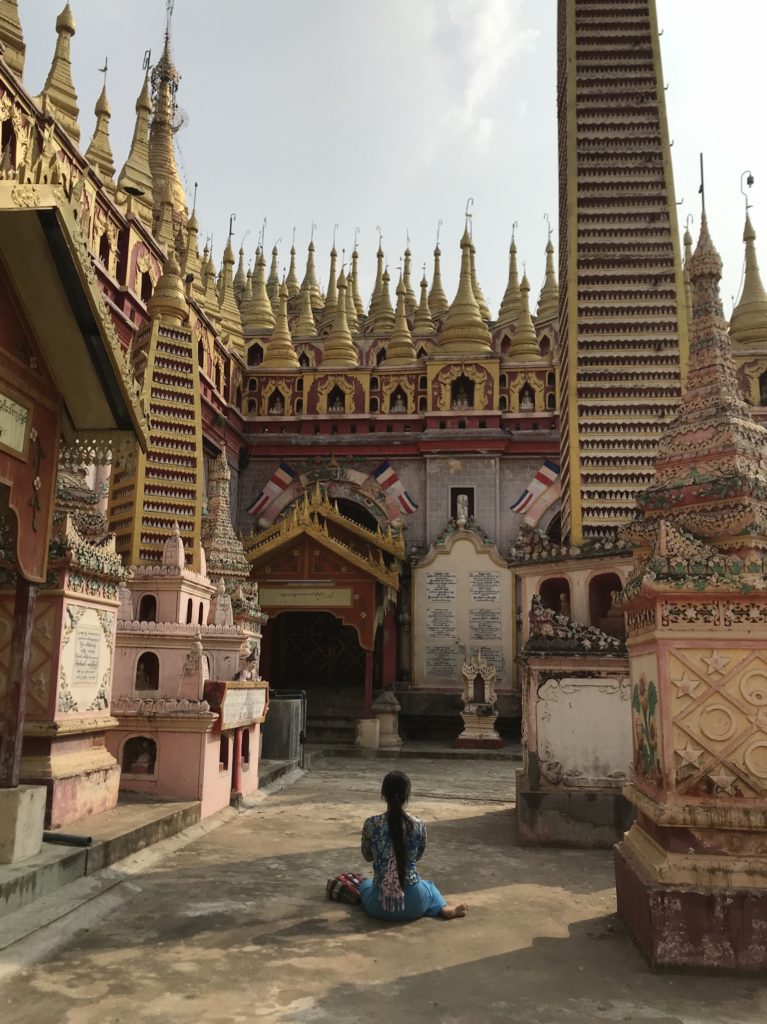
A woman prays outside Thanboddhay Pagoda.
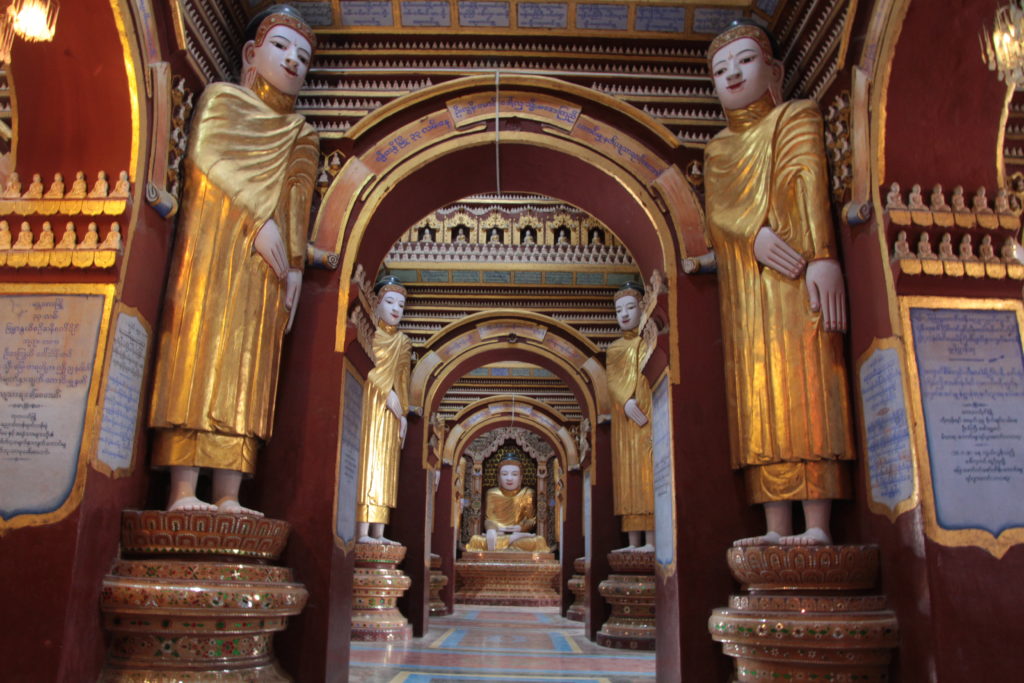
Inside the Five Hundred Thousand Buddha temple. Each of the small white dots lining the ceiling is a tiny Buddha carving!
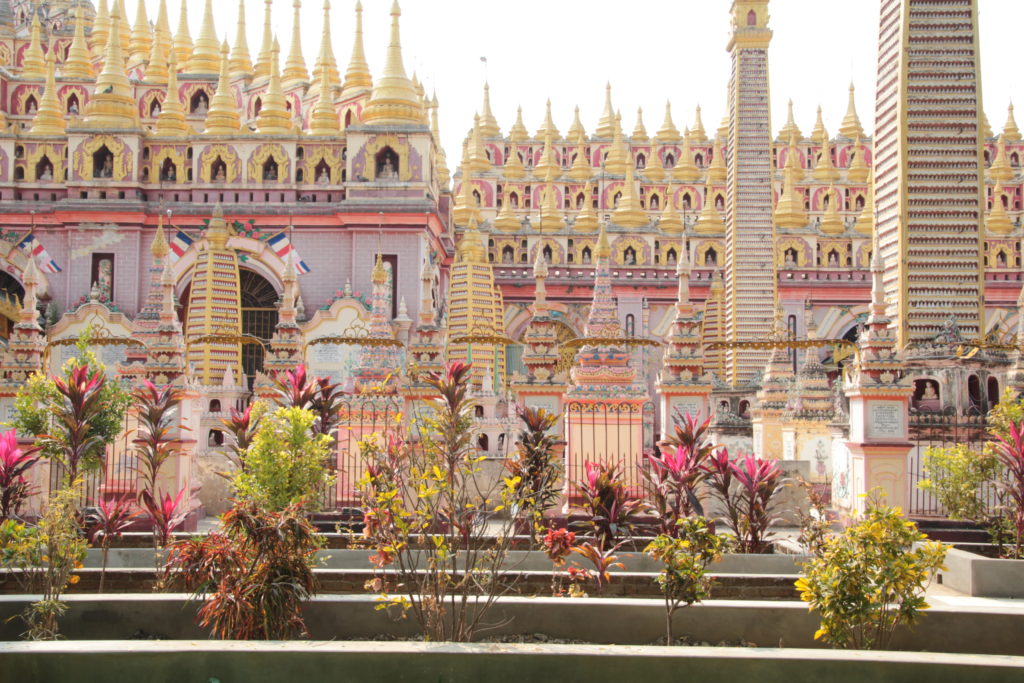
The gorgeous pagoda seen from the street.
After the temple we headed to the world’s biggest standing Buddha (also called LaykyunSetkyar Buddha) and a reclining buddha, huge statues constructed on a hillside that are visible from miles away. These enormous structures are recent, completed in 2008, and are pilgrimage destinations for Buddhists from all over the country and region. The standing Buddha in particular is 31 stories tall and hollow, with paintings and staircases inside that you can follow nearly all the way up. The murals on the walls depict graphic and violent scenes of Buddhist hell and sinners being punished, so after a couple of floors of this (and being stopped more than a few times by locals wanting a photo with me) I turned around and went back down. While certainly impressive in their size, there was something less appealing to me knowing that they were so recently constructed just for the sake of being big and attracting visitors.
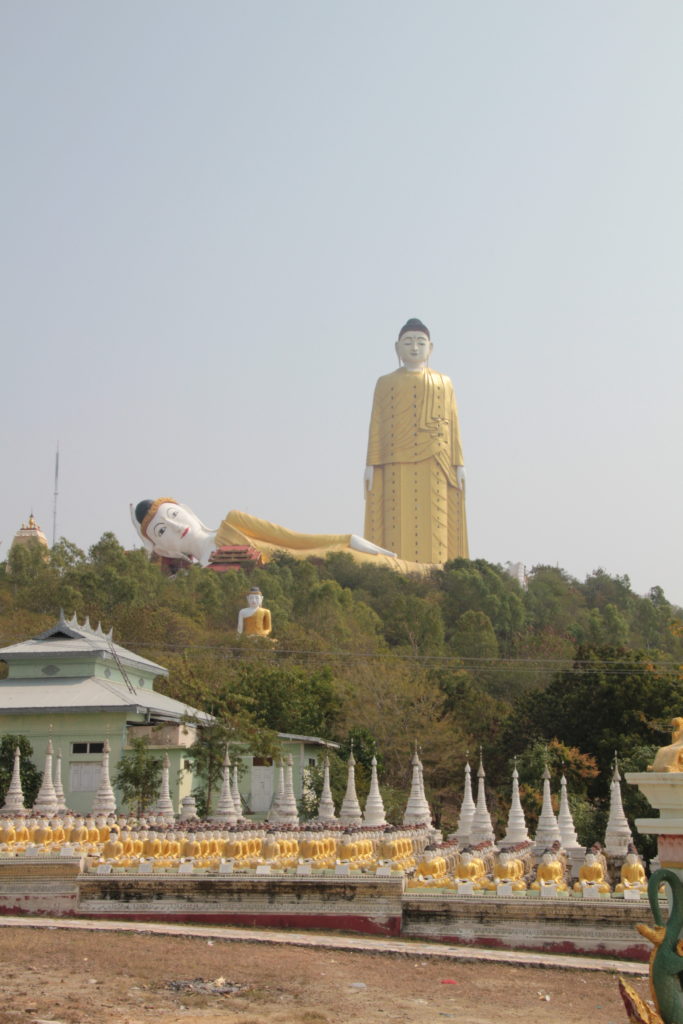
The enormous standing and reclining Buddha seen in the distance atop a hill.
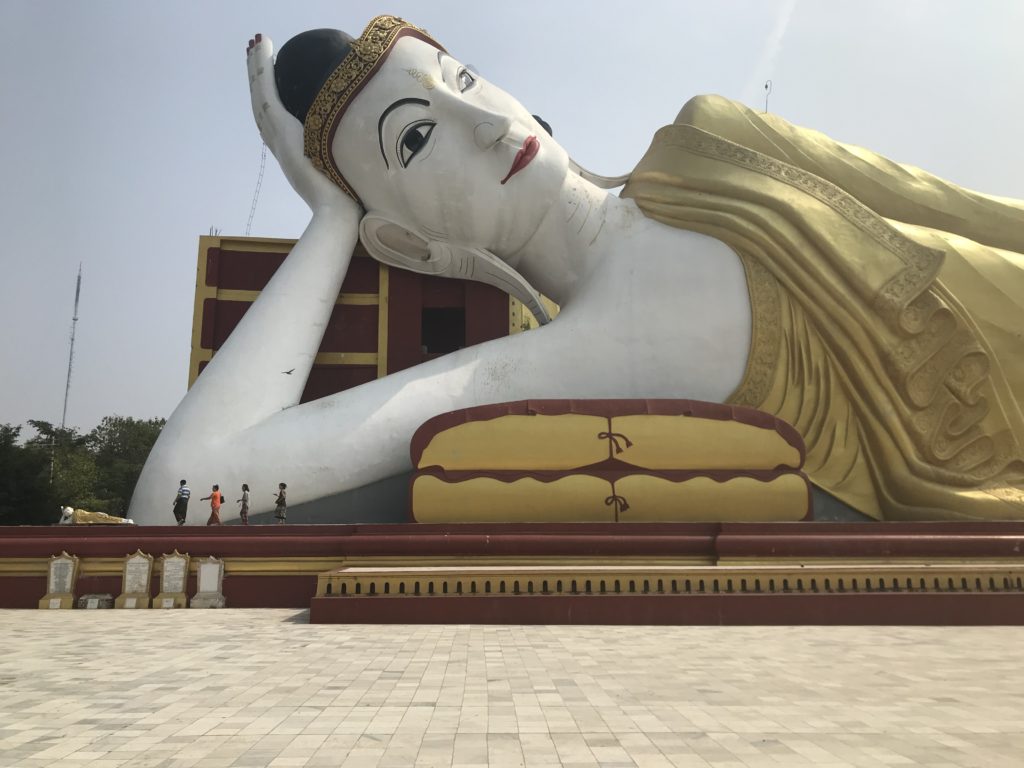
People walk in front of the elbow of the giant Reclining Buddha.
After leaving the Buddhas, the driver and I stopped back at the hotel to see if Rorie was feeling up to joining us for the afternoon (he wasn’t), then headed out to what was described to me as a “cave temple” called Pho Win Taung, where legend has it that those seeking supernatural powers would come to meditate. The photo on the map looked like an underground cave with Buddha statues in it, which looked pretty cool, so I headed in the direction my driver gestured and wandered around for a while. It was definitely something – there were old carvings, stupas, and Buddhas carved into the stone, and to my delight there were wild monkeys running around eating the fruit and corn that visitors left – but I saw nothing even closely resembling a cave or underground area. After slowly wandering, following anyone who looked like they knew where they were going (I was the only Westerner there, and it turns out no one else did know any better than I did), I returned to the taxi and tried to ask my driver where the caves were. He didn’t know enough English to understand my question or answer me, so I assumed it must be at the next stop – a nearby carved temple called Shwe Ba Taung that was described on the map under the same photo.
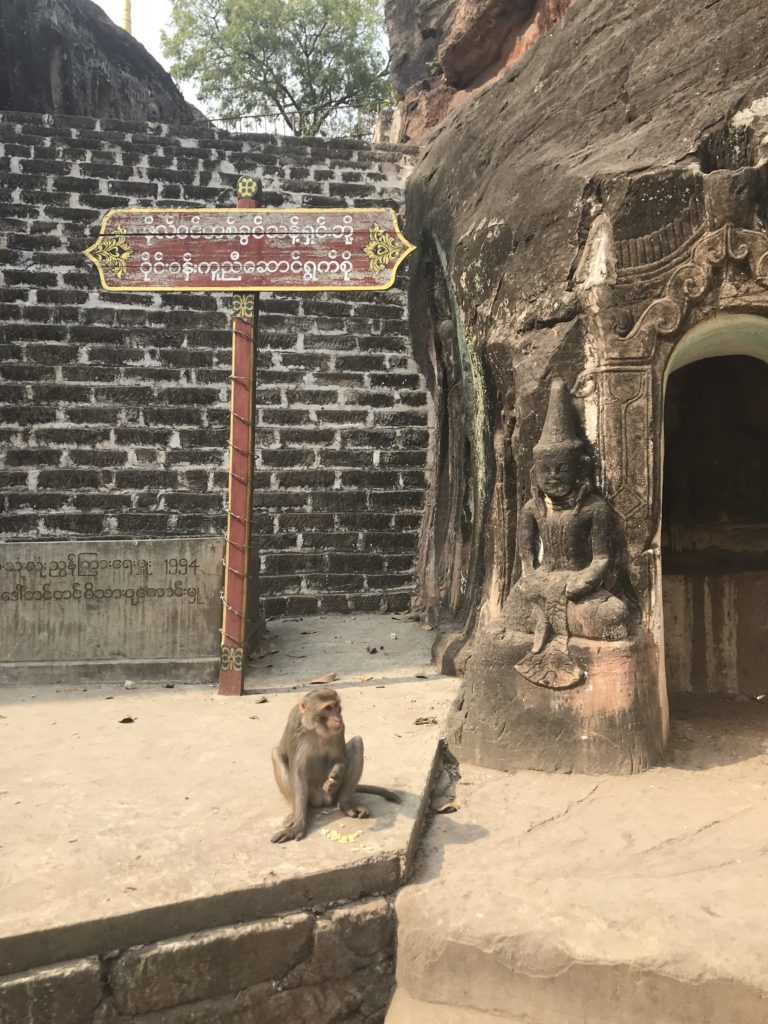
A monkey sits on the ground in front of a sign at Pho Win.
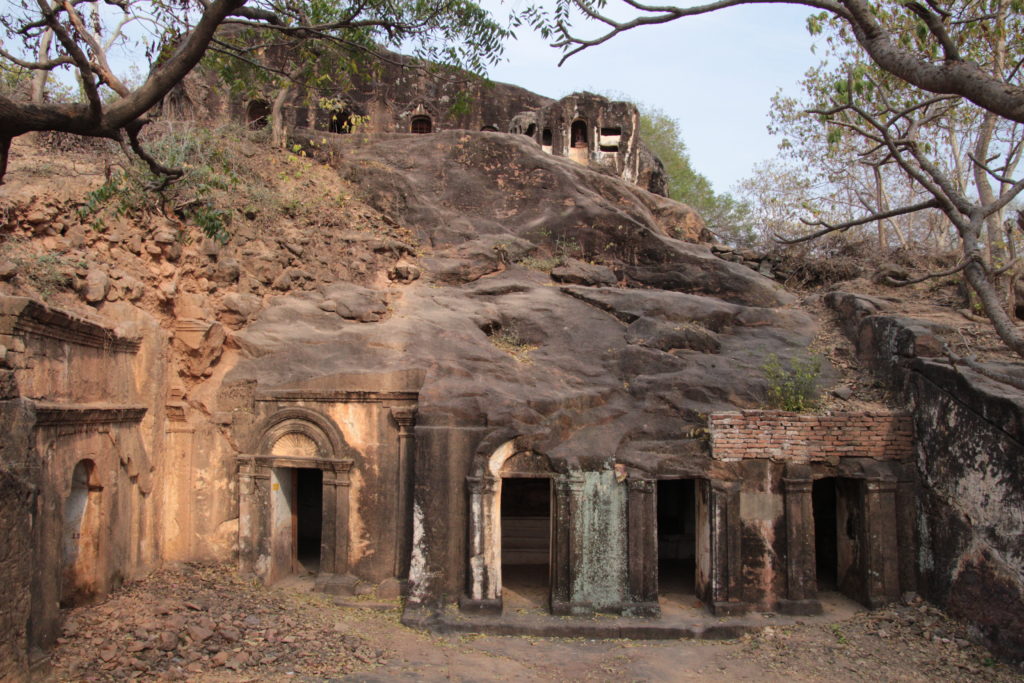
Some of the doorways carved into the stone.
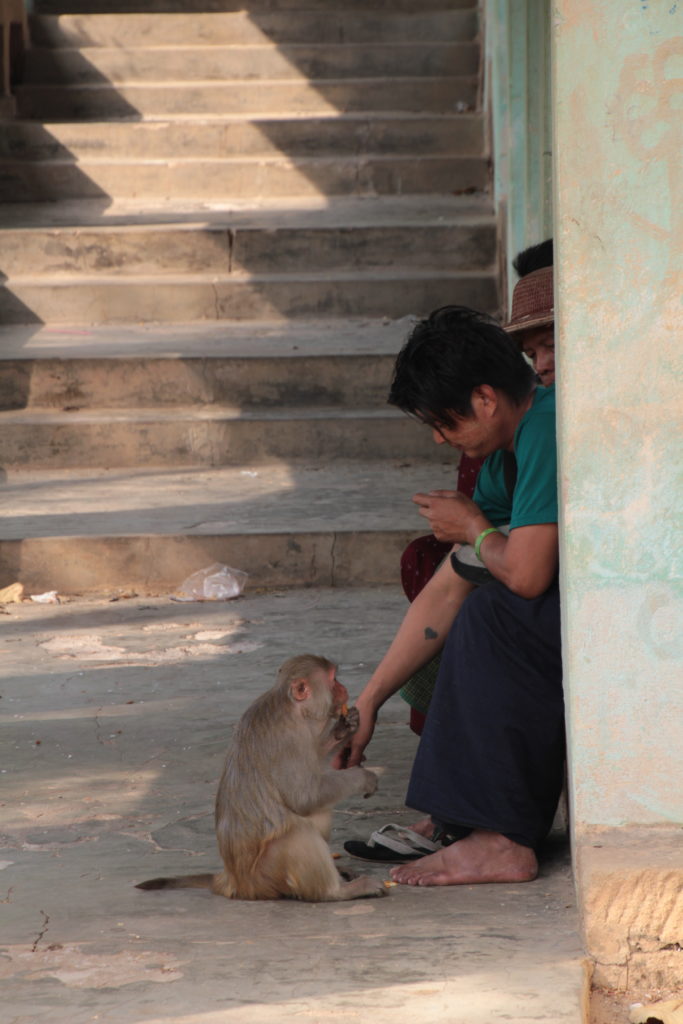
A visitor hand-feeds a monkey at Pho Win.
Upon arriving at the Shwe Ba Taung, I was struck by the dramatic entrance of a stairwell leading down into a narrow passageway between carved cliff faces, with shallow grottoes and rooms filled with Buddhas on either side. It was a really beautiful and fascinating place (built either in the 7th or 11th centuries, depending on your interpretation of the poorly-translated description on my map). I wandered around the relatively small maze of passageways and realized that I hadn’t found the cave from the picture, so I tried asking an employee at the site who roughly conveyed to me that the photo was back at the previous stop, Pho Win.
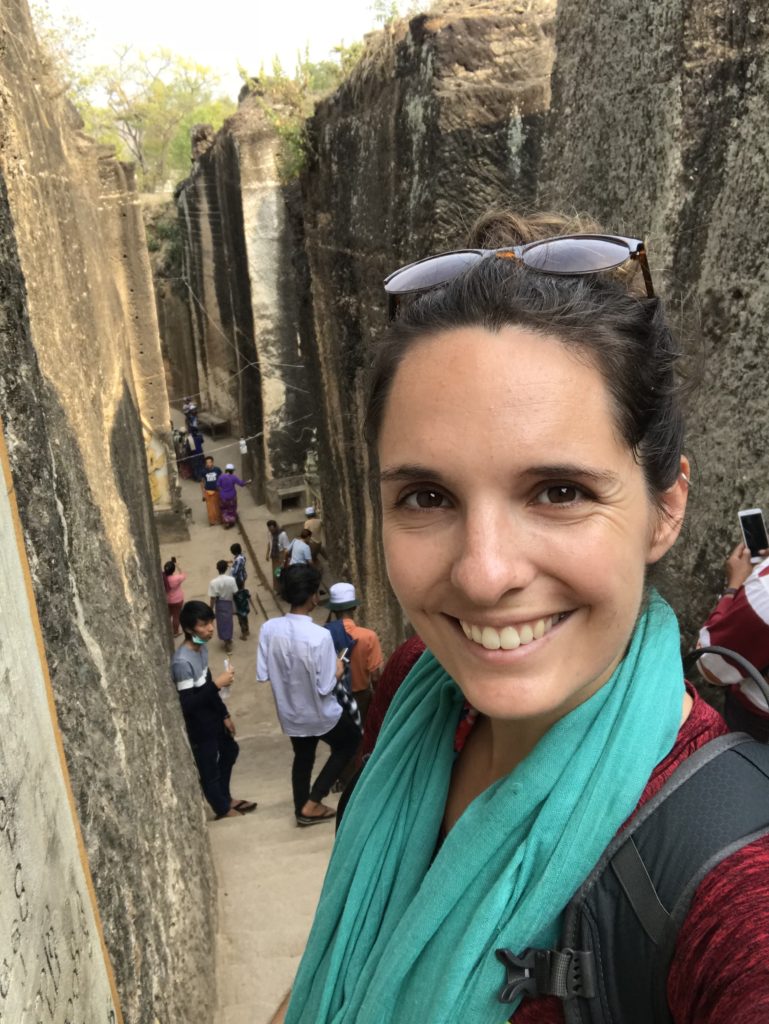
In front of the entranceway to the carved rock walls of the temple.
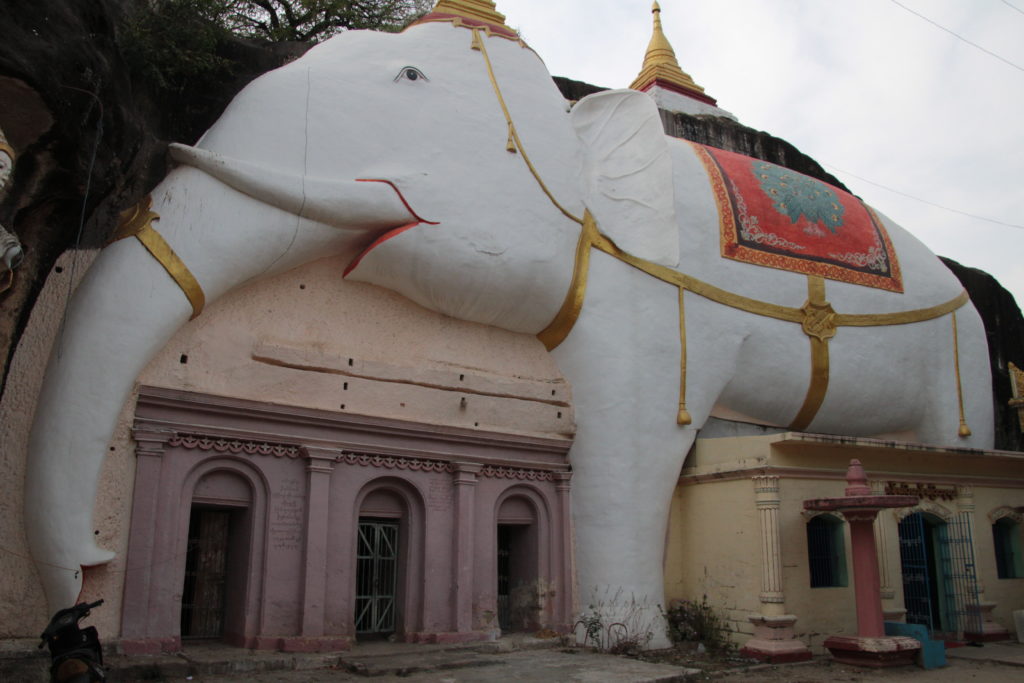
How cool is this elephant building?
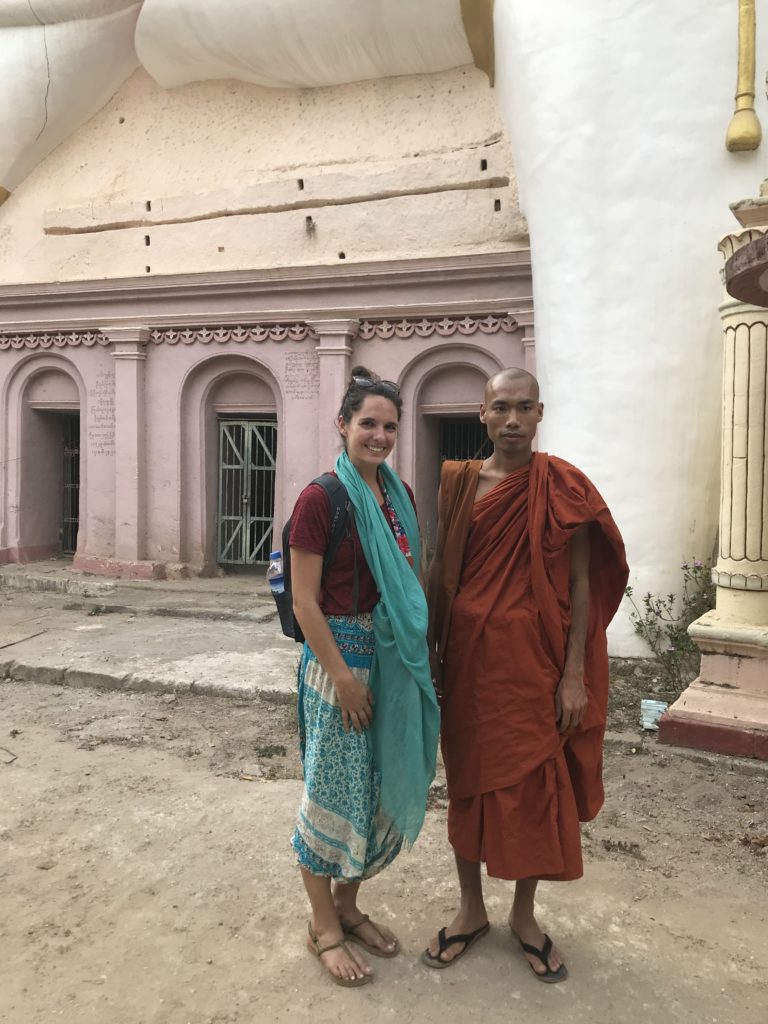
This monk pulled out his smartphone and asked to take a photo with me. I was so excited!
I grappled with whether or not I should even try to go back and find it, and eventually decided to go for it, because why not, and that’s part of why I’d come in the first place. I managed to explain to my driver that I wanted to go back and find the caves (luckily it was on the same road and not out of our way), and once we got back my driver took it as his personal mission to find me this cave. He took the map with the photo and asked a woman selling produce near the parking lot, who gestured up the way I had gone before. Then my driver headed up the stairs before stopping at the souvenir stall of a woman he seemed to know and asking her to help me. A young boy of maybe 7 or 8 was there, maybe her son, and after talking to him in Burmese she turned to me and said “he knows where it is” and gestured for me to follow the child, who was now clutching the map in his hands. My driver headed back to the car to wait and I followed the boy back the way I’d been before, figuring hey, at least he’s cute and what’s the worst that can happen?
Turns out he did know where the cave was, and I felt vindicated in not finding it before. The entrance was hidden in one of countless small doorways, completely unmarked (at least in English; maybe there were clear Burmese signs but certainly nothing I could recognize as such). [Editor’s note: As a point of clarification, there’s no such thing as “clear Burmese signs” as far as we’re concerned. Burmese writing is absolutely aesthetically beautiful, but impossible to parse – it’s just a series of full, half and quarter circles, with stray lines coming off of them and sometimes with them stacked. Totally indecipherable.] Most of the small doorways led into shallow grottoes with a Buddha statue or two and that’s it, but this one had an unassuming passageway off to the side that led into a winding, twisting and unlit passageway full of Buddha statues. I followed the young boy as he zipped through the cave and led me out the other side, through an equally unmarked doorway. After ducking back inside for a few pictures, I emerged and thanked him for showing me. I gave him some money as a tip, and indicated that he could keep the map (I think he liked the map more than the money if I’m honest). We headed back down where I left him at the souvenir stall and found my driver again to head back to the hotel. Was it worth the extra trip back to find the cave? Probably not for just the cave, to be honest – it was cool but not lit up and not as big as I was expecting (the photo on the brochure was very flattering). However, it was a great adventure following my young guide, and I had a great time trying to communicate and allowing myself to be helped by the friendly people around me.

The Buddha statues in the unmarked cave passageway.
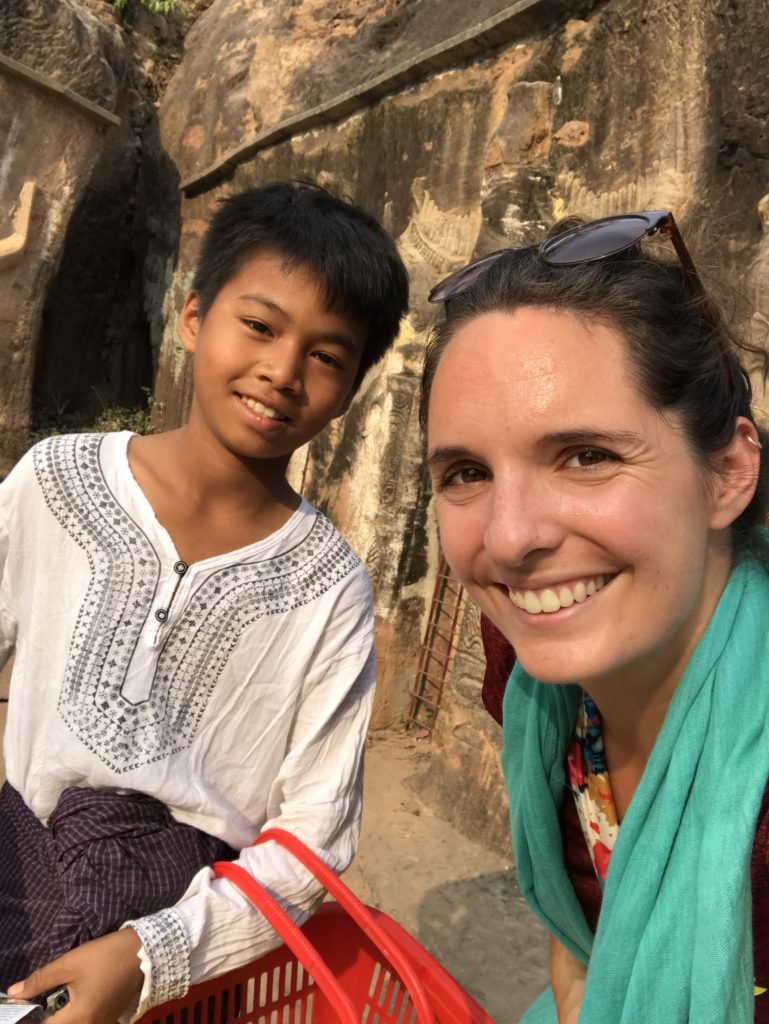
Me with my young helper.
Overall, Monywa was a bit of a mixed bag. It was unfortunate that Rorie was so sick that he basically missed the entire city, [Editor’s note: It sucks, but such is life. I was super ill and, as a result, it was completely unavoidable for me to miss all the Monywa sights. Fortunately, we’re travelling for so long that it’s not a huge deal to miss a couple of sights here and there. As long as we’re able to see the big stuff (e.g., Bagan), then it’s all okay.] and in retrospect I’m not sure the places I went were worth the extra transportation, hotel accommodations, and time. But I really loved the Thanboddhay Pagoda, and the She Ba Taung carved passageways were beautiful as well, so it certainly wasn’t a waste of time by any means. I think that Monywa will be a fascinating place to visit in another five or ten years, since as tourism grows in Myanmar I can imagine this town changing quickly and dramatically.
Next, we’re on to a highlight of Myanmar – Bagan, land of thousands of temples!
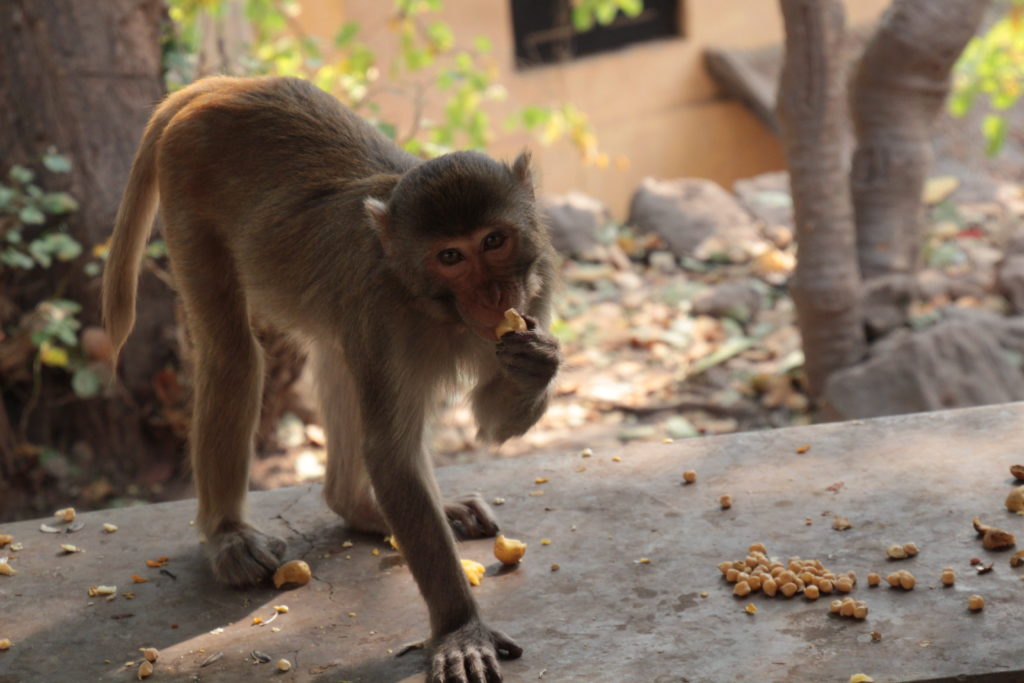
Another monkey portrait because, you know me.
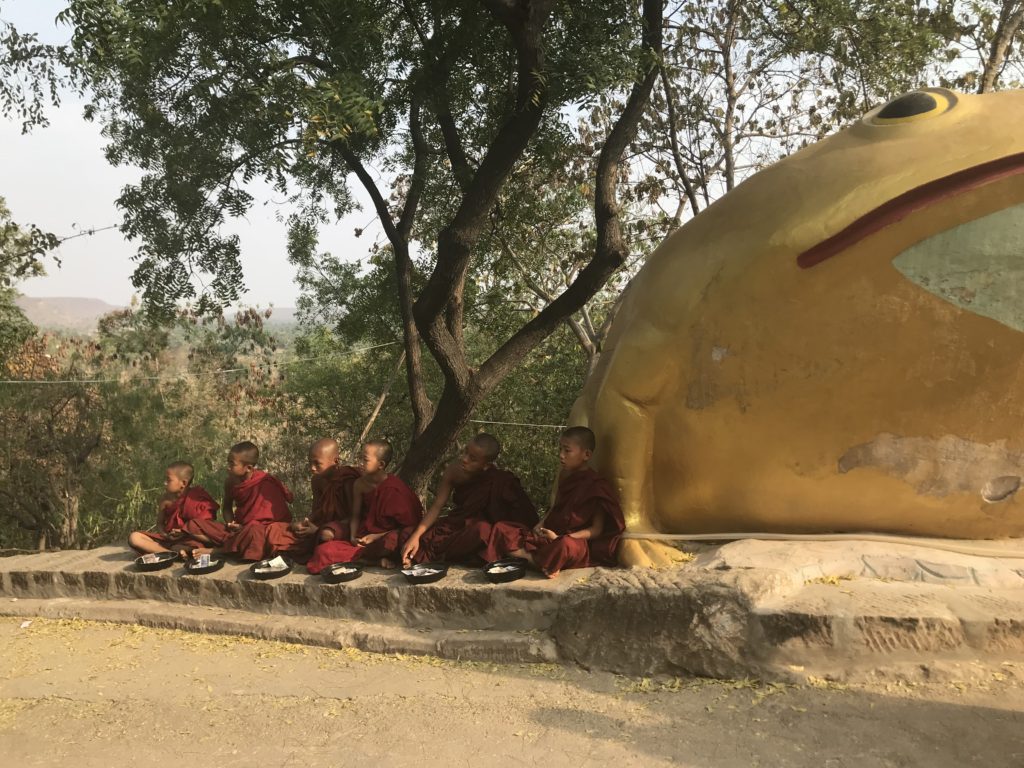
Young monks sit next to a large frog statue.
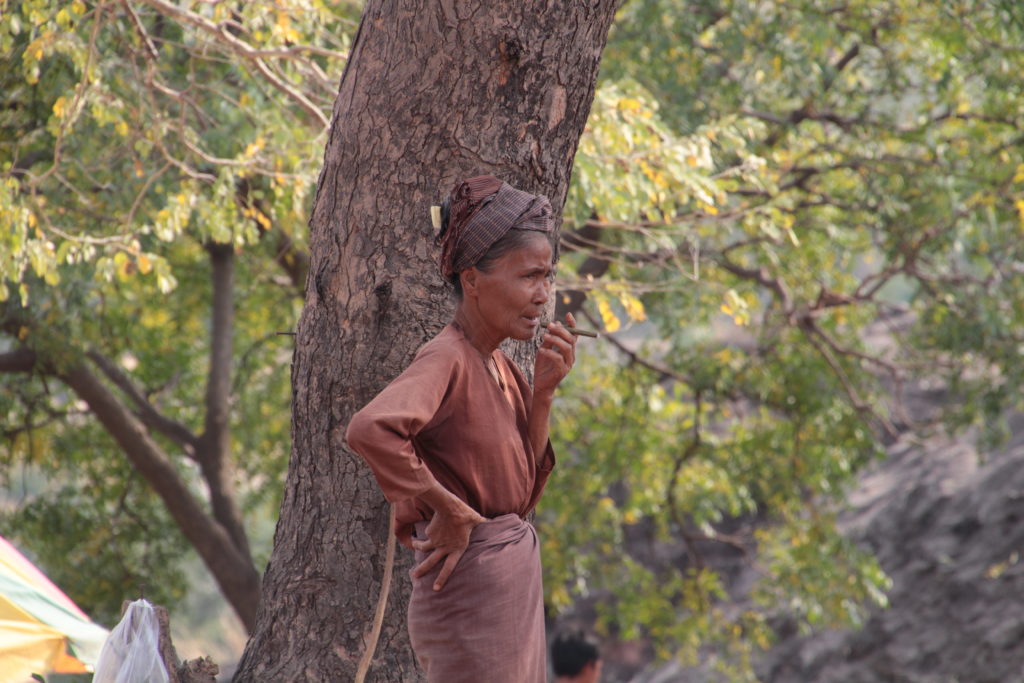
An old woman smokes a hand-rolled cigar she made.
